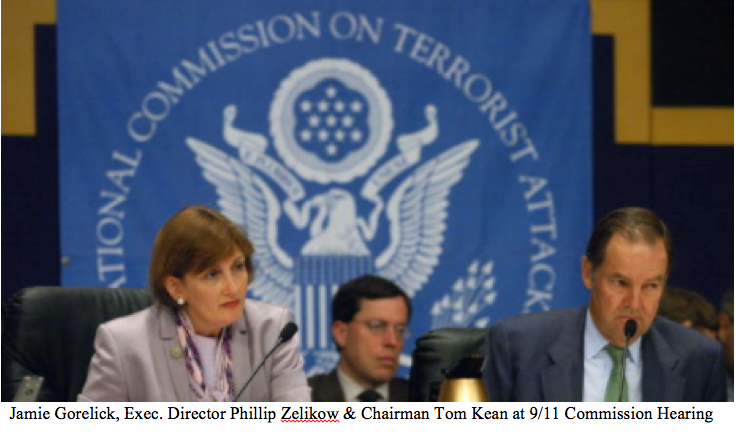 By Peter Lance January 9th, 2017. The Huffington Post When NBC News reported today that Jared Kushner, Donald Trump’s son-in-law, would soon be a “top advisor” to the President-elect, his principal spokesperson asserting that Mr. Kushner “is committed to complying with federal ethics laws” was none other than ex-9/11 Commissioner and Clinton administration Deputy A.G. Jamie Gorelick, author of the controversial “wall memo” which many Republicans blamed for the “stove-piping” between intelligence agencies leading up to the 9/11 attacks.
By Peter Lance January 9th, 2017. The Huffington Post When NBC News reported today that Jared Kushner, Donald Trump’s son-in-law, would soon be a “top advisor” to the President-elect, his principal spokesperson asserting that Mr. Kushner “is committed to complying with federal ethics laws” was none other than ex-9/11 Commissioner and Clinton administration Deputy A.G. Jamie Gorelick, author of the controversial “wall memo” which many Republicans blamed for the “stove-piping” between intelligence agencies leading up to the 9/11 attacks.
But as I documented in the fully annotated 2009 edition of Triple Cross, my third investigative book for HarperCollins exploring the epic failures by the FBI and Justice Department during that period, Mrs. Gorelick was also largely responsible for allowing Osama bin Laden’s brother-in-law Mohammed Jamal Khalifa, who was in U.S. custody at the time to go free.
What follows are key excerpts on those two extraordinary lapses by the lawyer who today insists that Ivanka Trump’s husband will tow the line when it comes to his many potential conflicts-of-interest as reported in January 8th’s New York Times.
THE “WALL MEMO”
After 9/11, a number of senior Justice Department officials, including former Attorney General John Ashcroft, blamed the intelligence “dysfunction” on “the wall,” a reputed legal barrier separating FBI criminal investigators of past terror cases from those in the FBI’s Intelligence squads whose job it was to prevent future acts. This alleged “wall” was embodied in that infamous March 1995 memo by then Deputy Attorney General Jamie Gorelick.
Testifying before the 9/11 Commission in 2004, Ashcroft claimed that “the single greatest structural cause for September 11 was the wall that segregated criminal investigators and intelligence agents.”
Gorelick herself, he alleged, had “built that wall with that March 1995 memo.” At the time he made that statement, Gorelick was on the dais facing Ashcroft as one of the ten 9/11 Commissioners. 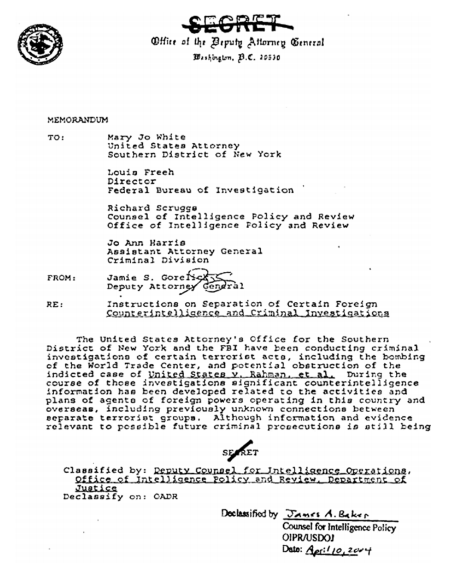
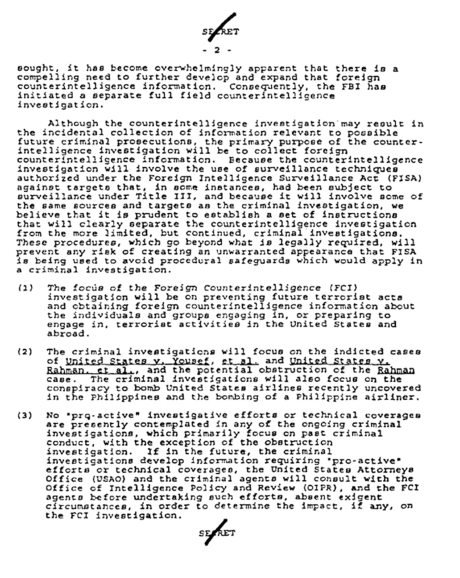 Five days later, in her own defense, Gorelick wrote a Washington Post op-ed piece insisting that she “did not invent the ‘wall,’ which is not a wall but a series of procedures implementing a 1978 statute.”
Five days later, in her own defense, Gorelick wrote a Washington Post op-ed piece insisting that she “did not invent the ‘wall,’ which is not a wall but a series of procedures implementing a 1978 statute.”
Whatever its origin, by the time the 9/11 Commission Report was published in July 2004, both sides of the debate seemed to agree that “stove piping,” or the compartmentalization, of intelligence was a key factor in the breakdown that led to two 767’s slicing into the Twin Towers and a 757 ripping a hole in the Pentagon.
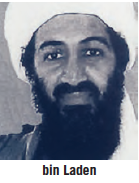 But in many ways, Mrs. Gorelick’s memo had a more personal effect. It served as the legal basis for a kind of disconnection of “the dots” that might have exposed her own negligence in helping to spring bin Laden’s brother-in-law from U.S. custody, where his belongings contained a potential treasure trove of al Qaeda-related intelligence.
But in many ways, Mrs. Gorelick’s memo had a more personal effect. It served as the legal basis for a kind of disconnection of “the dots” that might have exposed her own negligence in helping to spring bin Laden’s brother-in-law from U.S. custody, where his belongings contained a potential treasure trove of al Qaeda-related intelligence.
THE DEPORTATION OF KHALIFA
On December 16, 1994, five days after 1993 World Trade Center bomber Ramzi Yousef planted an explosive device aboard Philippine Airlines Flight 434, the agents in the FBI’s San Francisco office made an extraordinary seizure. Khalifa, bin Laden’s best friend and former roommate, was captured at a Holiday Inn just twenty-six miles from al Qaeda spy Ali Mohamed’s house in Santa Clara, California.
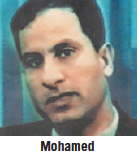 The arrest took place in Morgan Hills, the very Silicon Valley town where Special Agent John Zent, Mohammed’s FBI handler lived. If this arrest had been properly followed up by the Bureau and the Justice Department, it could have led to the seizure of both Ramzi Yousef and his uncle Khalid Shaikh Mohammed, and stopped the 9/11 plot dead in its tracks.
The arrest took place in Morgan Hills, the very Silicon Valley town where Special Agent John Zent, Mohammed’s FBI handler lived. If this arrest had been properly followed up by the Bureau and the Justice Department, it could have led to the seizure of both Ramzi Yousef and his uncle Khalid Shaikh Mohammed, and stopped the 9/11 plot dead in its tracks.
But what followed was a series of missteps and bad decisions at the highest levels of the State and Justice Departments that would have a catastrophic impact on America’s ability to end bin Laden’s jihad against America.
Khalifa, thirty-seven, was born in Medina, Saudi Arabia. A short, wiry man with a close-cropped beard, he used aliases including Abdul Bara, Abu Baraa, and Jimmy Jack. 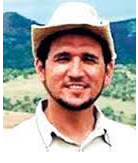
Khalifa was so close to the Saudi billionaire that he’d married bin Laden’s sister. From 1983 to 1991, he had been trusted by al Qaeda with running the Philippines branch of the International Islamic Relief Organization (IIRO), one of their key NGOs with links to the Hamas terrorist organization.
The Philippines National Police (PNP) believed that Khalifa was bankrolling the Yousef-KSM-Murad-Wali Khan Manila cell via Konsonjaya, a cutout company in Malaysia. 
The PNP also suspected Khalifa of having “contacts with Islamic extremist and fundamentalist groups…in Iraq, Jordan, Turkey, Russia, Malaysia, United Arab Emirates, Romania, Lebanon, Syria, Pakistan, Albania, the Netherlands, and Morocco.”
More significant, he also had ties to al Gamma’a Islamyah (IG), Blind Sheikh Omar Abdel Rahman’s Egyptian-based terror group. Khalifa’s business card was discovered in a search of Sheik Omar’s residence the year before, and he was one of 172 unindicted co-conspirators named by prosecutors Patrick Fitzgerald and Andrew McCarthy in the Day of Terror case, which was about to get underway in The Southern District of New York in early 1995.
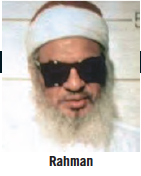 At the time of his arrest in Morgan Hills, Khalifa was traveling with Mohammed Loay Bayazid, aka Abu Rida al-Suri, a naturalized U.S. citizen who worked in the Chicago office of the Benevolence International Foundation, the al Qaeda NGO. In the early 1990s, Bayazid had attempted to obtain uranium for Osama bin Laden.
At the time of his arrest in Morgan Hills, Khalifa was traveling with Mohammed Loay Bayazid, aka Abu Rida al-Suri, a naturalized U.S. citizen who worked in the Chicago office of the Benevolence International Foundation, the al Qaeda NGO. In the early 1990s, Bayazid had attempted to obtain uranium for Osama bin Laden.
Further, although Khalifa was carrying a Saudi passport, he’d flown into the Bay Area from London carrying a Philippines Special Return Certificate indicating that he was heading back to Manila.
THE BIGGEST AL QAEDA FISH CAUGHT BY THE FEDS
With his direct connections to bin Laden, the blind Sheikh, and Ramzi Yousef, Mohammed Jamal Khalifa was the biggest al Qaeda fish the Feds had caught since Abdel Rahman himself in July 1993.
“It’s difficult to express just how many dots the FBI and Justice Department prosecutors could have connected with Khalifa, at the time of his arrest, given the contacts he had,” says Paul Thompson, terrorism researcher and author of The Terror Timeline, who has compiled a database of more than 10,000 open-source al Qaeda–related articles and court pleadings on the nonprofit website www.historycommons.org.
After serving a search warrant on Khalifa, the Feds found files in his Newton PDA that listed one of his aliases as Abu Baraa. That same name had been scrawled inside one of the bomb manuals carried by Yousef’s traveling partner Mohammed Ajaj, who had been convicted earlier in 1994 for the World Trade Center bombing.
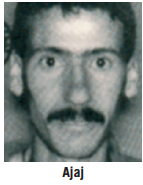 Searching Khalifa’s belongings, the FBI and INS discovered Islamic literature tying him to IIRO. Also in the PDA were Wali Khan’s beeper number and a number in Pakistan that Yousef had used to call Manila. Encrypted phone numbers tied to Khalifa’s NGO were later found on Yousef’s Toshiba laptop, and when Wali Khan was finally arrested, he was found to be carrying multiple numbers for MJK.
Searching Khalifa’s belongings, the FBI and INS discovered Islamic literature tying him to IIRO. Also in the PDA were Wali Khan’s beeper number and a number in Pakistan that Yousef had used to call Manila. Encrypted phone numbers tied to Khalifa’s NGO were later found on Yousef’s Toshiba laptop, and when Wali Khan was finally arrested, he was found to be carrying multiple numbers for MJK.
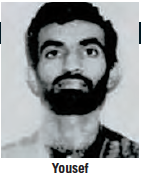 Given his links to Yousef’s cells in New York and Manila, Khalifa was the human linchpin who could have furnished the FBI with proof of Yousef’s two planned attacks on the World Trade Center: his 1993 bombing, executed with the help of Ali Mohamed’s trained jihadis, and the planes-as-missiles operation, conceived in Manila, that Yousef’s uncle KSM would ultimately carry out on 9/11.
Given his links to Yousef’s cells in New York and Manila, Khalifa was the human linchpin who could have furnished the FBI with proof of Yousef’s two planned attacks on the World Trade Center: his 1993 bombing, executed with the help of Ali Mohamed’s trained jihadis, and the planes-as-missiles operation, conceived in Manila, that Yousef’s uncle KSM would ultimately carry out on 9/11.
Moreover, Khalifa was motivated to talk. At the time of his arrest in Morgan Hills, he was wanted in Jordan for a series of al Qaeda related bombings. As a State Department cable after his arrest stated:
“FYI, Osama bin Laden’s brother-in-law, Muhammad Jamal Khalifah [sic], was arrested in California on 12/16. REFTEL (reference telegram) refers to Khalifa as a known financier of terrorist operations and an officer of an Islamic NGO in the Philippines that is a known Hamas front. He is under indictment in Jordan in connection with a series of cinema bombings earlier this year.”
 On the day of his arrest in mid-December, the State Department designated Khalifa a “Deportable Alien.” A deputy assistant secretary of state issued a certificate of revocation for Khalifa’s visa for having “engaged in terrorist activity.”
On the day of his arrest in mid-December, the State Department designated Khalifa a “Deportable Alien.” A deputy assistant secretary of state issued a certificate of revocation for Khalifa’s visa for having “engaged in terrorist activity.”
A week later, on December 23, Philip C. Wilcox Jr., the State Department’s coordinator for counterterrorism, wrote to advise an immigration judge that Khalifa had “engaged in serious terrorist offenses” and that his release “would endanger U.S. national security”
He noted that “in the last two days there has been a significant additional development in this matter. On December 21 the State Security Court in Jordan found Mohammed Jamal Khalifa guilty of the charges for which he was indicted and imposed a capital sentence.”
After a four-month trial involving twenty-five suspected terrorists, the Jordanians had condemned Khalifa. Now in the safety of U.S. custody, he was facing execution if he returned to Amman.
KHALIFA’S LINKS TO THE WORLD’S MOST WANTED MAN
The details in Khalifa’s Newton address book should have led the FBI directly to Ramzi Yousef, the world’s most wanted man—who, unbeknownst to the Feds, was responsible for the PAL bomb plot that went down just five days before Khalifa’s seizure, and who was now contemplating three mass-casualty terrorist attacks. Further, for the two bin Laden offices of origin in New York, (the FBI’s New York Office and the SDNY) Khalifa’s web of associations should have underscored al Qaeda’s direct command and control of Yousef’s New York and Philippines operations.
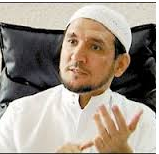 As to what the Feds could expect to get out of MJK, his death sentence in Jordan meant that he was motivated to talk, rather than risk extradition. But the Feds never got a chance to question him.
As to what the Feds could expect to get out of MJK, his death sentence in Jordan meant that he was motivated to talk, rather than risk extradition. But the Feds never got a chance to question him.
On January 5, 1995, a decision was made by Secretary of State Warren Christopher, and supported by Deputy Attorney General Jamie Gorelick, that ranks as one of the most profound intelligence errors committed by any U.S. official in the years leading up to 9/11.
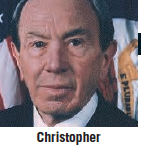 “Jordan is aware of Mr. Khalifa’s presence in the United States,” Christopher wrote to Attorney General Janet Reno, “and has asked for our assistance in sending him to Jordan so that he may be brought to justice. To permit Mr. Khalifa to remain in the United States in these circumstances would potentially be seen as an affront to Jordan and at odds with many of the basic elements of our cooperative bilateral relationship [and] potentially undermine our longstanding and successful policy of international legal cooperation to bring about the prosecution of terrorists.”
“Jordan is aware of Mr. Khalifa’s presence in the United States,” Christopher wrote to Attorney General Janet Reno, “and has asked for our assistance in sending him to Jordan so that he may be brought to justice. To permit Mr. Khalifa to remain in the United States in these circumstances would potentially be seen as an affront to Jordan and at odds with many of the basic elements of our cooperative bilateral relationship [and] potentially undermine our longstanding and successful policy of international legal cooperation to bring about the prosecution of terrorists.”
Christopher’s legal theory seemed part of a determined effort by top officials at Justice and State to craft an exit for Khalifa. Philip Wilcox’s letter of just two weeks before, and the certificate revoking MJK’s visa, had cited him for “terrorist activity.”
But according to Khalifa’s lawyer Marc Van Der Hout, “They dropped that halfway through his bond hearing. Then they [substituted] a charge that hadn’t been used before—enacted in 1990—that a person can be deported if the Secretary of State has reasons to believe the alien’s presence or activities could have potentially serious adverse foreign policy consequences. This is the first time they ever tried to use that statute.”
Christopher’s letter made no mention of Khalifa’s crucial value to the United States in its own terror fight. Keep in mind that the FBI found evidence in his PDA linking MJK directly to Yousef, the mastermind of the WTC bombing, who was at that very moment the object of a worldwide manhunt. That discovery alone should have far outweighed Jordan’s desire to punish Khalifa for a series of movie theater bombings.
GORELICK SENDS AN “EXPEDITE” LETTER
Nonetheless, the very next day, Jamie Gorelick—serving in Janet Reno’s absence as acting attorney general—sent an “expedite” letter in support of Christopher’s deportation request.
Strangely, Gorelick began the letter by noting that, pursuant to federal law, “the deportation of an alien in the United States…shall be directed by the Attorney General to a country promptly designated by the alien if that country is willing to accept him into its territory unless the Attorney General in his discretion concludes that deportation to such country would be prejudicial to the interests of the United States”
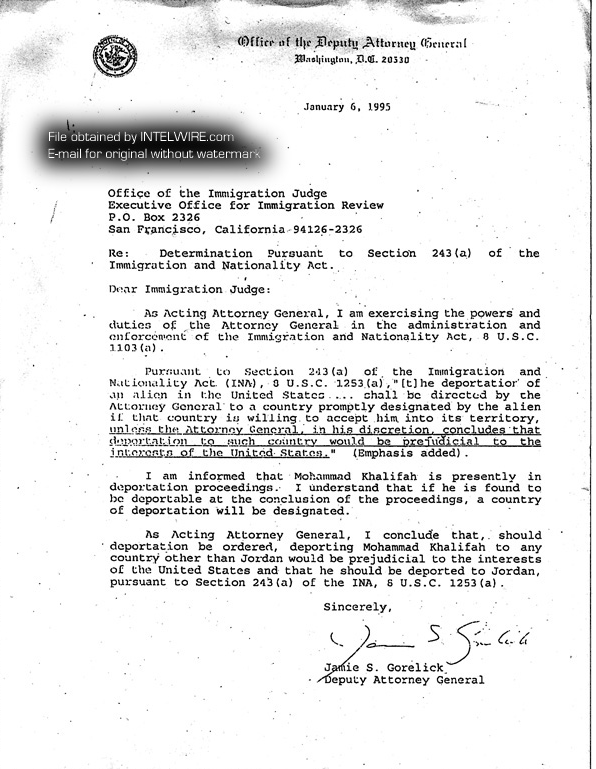
It’s difficult to fathom how it could have been in the interests of the United States to allow the deportation of Osama bin Laden’s brother-in-law, a man the State Department had just named as “a terrorist.”
But Gorelick went on record personally as supporting Christopher’s recommendation, concluding that “should deportation be ordered, deporting Mohammed Khalifa to any country other than Jordan would be prejudicial to the interests of the United States and that he should be deported to Jordan pursuant to Section 243 (a) of the Immigration and Nationality Act (INA).”
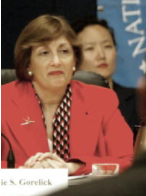 Rather than keeping him in the United States so that he could be debriefed by FBI agents, Gorelick was signing off on a decision first pressed by Warren Christopher who was feeling pressured from the Jordanians to extradite the accused terrorist financier.
Rather than keeping him in the United States so that he could be debriefed by FBI agents, Gorelick was signing off on a decision first pressed by Warren Christopher who was feeling pressured from the Jordanians to extradite the accused terrorist financier.
“I remember people at CIA who were ripshit at the time” over the decision, says Jacob L. Boesen, an Energy Department analyst then working at the CIA’s Counter Terrorism Center. “Not even speaking in retrospect, but contemporaneous with what the intelligence community knew about bin Laden, Khalifa’s deportation was unreal.”
From the time of his arrest, Khalifa maintained his innocence, contending that he was a legitimate businessman and philanthropist who had visited the Bay Area merely to meet with seed brokers as part of his import-export business. He categorically denied being a terrorist and claimed that his conviction in Amman was the result of perjured testimony by a witness who had been tortured.
A CURIOUS SERIES OF EVENTS
Khalifa was initially housed in the relatively low-security Santa Rita Jail in Alameda County. Then, over the next few months, a curious series of events began to unfold.
Rather than cooperating with the Feds, Khalifa initially fought his extradition to Jordan. He also filed a civil suit to get back the contents of his luggage, which included the coveted PDA and other computer files.
Astonishingly, the Feds complied.
On March 23, in a response to Khalifa’s motion for return of property and an order unsealing his search warrant, assistant U.S. Attorney Stephen R. Freccero stated that “The United States has no objection to the unsealing of the search warrant [and] the return of the property seized.”
So the treasure trove of al Qaeda related intelligence went back to MJK.
KHALIFA’S STATUS CHANGES DRAMATICALLY
Then, on April 19, the very same day as the bombing of the Murrah Federal Building in Oklahoma City, Mohammed Jamal Khalifa’s situation changed significantly. As terrorism analyst John Berger, who maintains the website intelwire.com, first discovered, Khalifa was abruptly shifted from the low-security Santa Rita jail to the maximum security Federal Correctional Institution in Dublin, California.
Then, a week after insisting that he remain in the United States, Khalifa did an abrupt 180-degree turn and now asked to be deported to Jordan after all. According to a San Francisco Examiner story, Khalifa wept before a federal judge as he denied his guilt, exclaiming, “I really don’t see any sign that I can protect myself here.”
Quoting Khalifa’s attorney, Marc van Der Hout, Eric Brazil wrote in the Examiner piece that “the current ‘anti-alien climate’ and extreme sensitivity to terrorist allegations in the wake of the Oklahoma City bombing made the United States a less promising field than Jordan on which to fight his legal battles.”
In return for Khalifa’s acceptance of the deportation order, the Feds now dropped the initial terrorism allegations and asserted a broader charge that his presence in the United States constituted a foreign policy hazard.
Curiously, his case merited such special treatment that he went before the federal magistrate in San Francisco’s federal district courthouse rather than the immigration courtroom on Kearny Street, which was typical in such matters.
“There’s no doubt that this case was being given high-level treatment by the Justice Department and State,” says terrorism researcher Paul Thompson.
WHEN DID KHALIFA LEAVE?
On May 5, 1995, the story took an even more mysterious turn.
In a UPI story entitled “Alleged Terrorist Deported to Jordan,” Thomas J. Schiltgen, the INS director for Northern California, was quoted as saying that Khalifa had been returned to Jordan two days before, on May 3.
The Associated Press ran a similar story, datelined Amman, quoting Khalifa’s lawyer, who declared that Khalifa “has been deported from the United States for retrial here.”
Yet according to Bureau of Prison records, on that date Khalifa was merely “admitted to an in-transit facility” of the BOP. John Berger of Intelwire who obtained the BOP records, wrote this analysis on March 20, 2006: 
At approximately 8:37 A.M., MJK was transferred out of Dublin FCI and out of BOP custody. He was designated 4-I on the data record. According to BOP, this designation indicates that he was removed from the custody of the BOP and placed in the custody of another government agency. BOP officials would not disclose the agency to which he was remanded. [emphasis added]
The question is whether that “government agency” kept Khalifa in custody here in the United States or in a remote facility overseas—because, according to his BOP inmate data sheet, “Khalifa remained in 4-I status for almost another four months until August 31, 1995.”
WHY IS THE DATE OF MJK’S DEPORTATION IMPORTANT?
Because in July 1995 a witness in his Jordanian murder case reportedly recanted, and Khalifa’s death sentence was rescinded. If he returned to the Jordanian capital after that date, he would be a free man. Thus, if MJK was still in U.S. custody as late as August, the initial reason for his extradition would have been eliminated.
If Khalifa was no longer a wanted fugitive in need of extradition, then keeping him in this country would result in no “serious adverse foreign policy consequences,” as Warren Christopher had alleged earlier. And the FBI would have had a potential seminal witness against bin Laden.
GREETED BY THE SAUDIS
Whether it was in May or August 1995, eventually Mohammed Jamal Khalifa, the brother-in-law of the man who would declare war on America, was extradited to Jordan and set free.
“The day he flew back to Saudi Arabia, he was greeted by a limo and a high-ranking official of the government embraced him,” said Mike Scheuer, former head of Alec Station, the bin Laden unit at CIA.
The San Francisco Chronicle quoted Vincent Cannistraro, a former CIA counterterrorism chief, as alleging that right after his return Khalifa went on to help establish the Islamic Army of Aden in Yemen, the al Qaeda related group that later claimed credit for the bombing of the U.S.S. Cole in October 2000.
“He should never have been allowed to leave U.S. custody,” Cannistraro said.
In April 2004, in a declaration pursuant to a lawsuit filed on behalf of thousands of 9/11 victims by the South Carolina law firm of Motley-Rice, Khalifa swore under oath that he had “never supported the loss of innocent life” and believed that there is “no justification for the tragic attacks of September 11, 2001. I have never supported any person or organization that I have known to participate in terrorist activities,” he declared.
Later, Khalifa was said to be “running a seafood restaurant in Jedda,” Saudi Arabia, according to Terry McDermott, who interviewed MJK for his acclaimed book on the 9/11 hijackers, Perfect Soldiers.
According to a piece by Nick Fielding in The Guardian, Khalifa was murdered in Madagascar in January, 2007. He was 49 years old.
As Fielding reported, he’d “been shot twice, stabbed and hacked at with an axe. His laptop, notebooks and money were missing, as were his two mobile phones. A survivor from the attack said a gang of up to 30 men had burst in to the guesthouse at the (gem) mine in Soameloka before setting upon their victim.”
Whether his death was a gem-related theft attempt or a link to MJK’s terrorist past remains a mystery.
AN EPIC MISSED OPPORTUNITY
“The road to 9/11 is paved with thousands of missed opportunities,” says terror expert Steven Emerson. “Along with each missed opportunity, we can go back and kick ourselves in the shin and one of those [instances] would’ve been holding onto Mohammed Jamal Khalifa and following up on what he was doing for the Osama bin Laden organization.”
COVERING FOR AN ACT OF NEGLIGENCE?
The Khalifa case is worth studying in detail, though, not just because of the massive security loss that it represented for America, but because it may have led to that infamous March 1995 memo from Deputy A.G. Gorelick which sought to define how the FBI and Justice Department would investigate terrorism for years to come.
In that memo, promulgated two months after her letter acquiescing to Khalifa’s deportation, Gorelick issued the Justice Department policy creating the “wall.”
She instructed FBI agents and DOJ prosecutors to separate past criminal investigations, “including the bombing of the World Trade Center” and “the indicted case of United States v. Rahman, et al.” from Foreign Counter Intelligence (FCI) investigations of future terrorist acts.
In effect, Gorelick was ordering the breakup of the Justice Department’s war on terror into two separate camps.
“Because the counterintelligence investigation will involve the use of surveillance techniques authorized under the Foreign Intelligence Surveillance Act (FISA) against targets that, in some instances, had been subject to surveillance under Title III, and because it will involve some of the same sources and targets as the criminal investigation, we believe that it is prudent to establish a set of instructions that will clearly separate the counter-intelligence investigation from the more limited, but continued, criminal investigations,” Gorelick wrote.
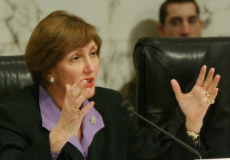 Since most of the Justice Department’s body of knowledge on al Qaeda, Yousef, and the blind Sheikh’s plots was contained in the files of FBI agents and SDNY prosecutors who worked those criminal cases, Gorelick’s extraordinary edict had the potential legal effect of isolating them from the FCI agents trying to stop the next al Qaeda bomb from detonating.
Since most of the Justice Department’s body of knowledge on al Qaeda, Yousef, and the blind Sheikh’s plots was contained in the files of FBI agents and SDNY prosecutors who worked those criminal cases, Gorelick’s extraordinary edict had the potential legal effect of isolating them from the FCI agents trying to stop the next al Qaeda bomb from detonating.
Gorelick’s memo also had a more personal effect: It may well have helped to obscure her support for Khalifa’s extradition at a time when prosecutors in the SDNY had recently commenced the epic case they were mounting against the blind Sheikh and his cohorts.
BEYOND WHAT WAS LEGALLY REQUIRED
What makes Gorelick’s memo even more astonishing is that it wasn’t legally necessary. She even admitted in her order that these new “procedures… go beyond what is legally required”
As mentioned earlier, the 2004 disclosure of that memo by Attorney General John Ashcroft, in his testimony before the 9/11 Commission, set off a firestorm of criticism since Gorelick was serving as one of the ten Commissioners.
 After Ashcroft’s revelation, F. James Sensenbrenner Jr. (R-WI), chairman of the House Judiciary Committee, accused Gorelick of having “an inherent conflict of interest” and called for her immediate resignation.
After Ashcroft’s revelation, F. James Sensenbrenner Jr. (R-WI), chairman of the House Judiciary Committee, accused Gorelick of having “an inherent conflict of interest” and called for her immediate resignation.
But the “wall memo” debate quickly degenerated into partisan finger-pointing after Ashcroft was forced to admit that his own deputy attorney general Larry Thompson had renewed the terms of the Gorelick memo in August 2001, weeks before 9/11.
As retired FBI special agent Joe O’Brien sees it, “The wall memo was a disastrous move. Because, as it turned out, all of these cases were related. This was a bin Laden–New York show from start to finish.”
In years to come Gorelick would support a decision that limited the scope of the commission’s investigation “with regard to the Department of Justice” to the “period 1998 forward.”
That narrower field of inquiry had the effect of ensuring that the Commission wouldn’t look back at the disastrous Khalifa deportation, which Gorelick supported, or question whether she had used the “wall memo” to keep prosecutors from connecting the dots on her negligence.
“There’s no doubt that the commission should have gone back at least as far as the first Bush administration in order to effectively measure the intelligence failures that led to the attacks,” says Monica Gabrielle, a member of the core group of 9/11 victim families that campaigned for the creation of the commission. “But Gorelick was one of those who wanted to concentrate only on the last few years.”
Apparently she got her way. In the entire 604-page authorized edition of The 9/11 Commission Report, there isn’t a word about Gorelick’s role in supporting the exit of Mohammed Jamal Khalifa, or about the “wall memo” —two of the most damaging moves the U.S. justice system took on the road to 9/11.


You must be logged in to post a comment Login